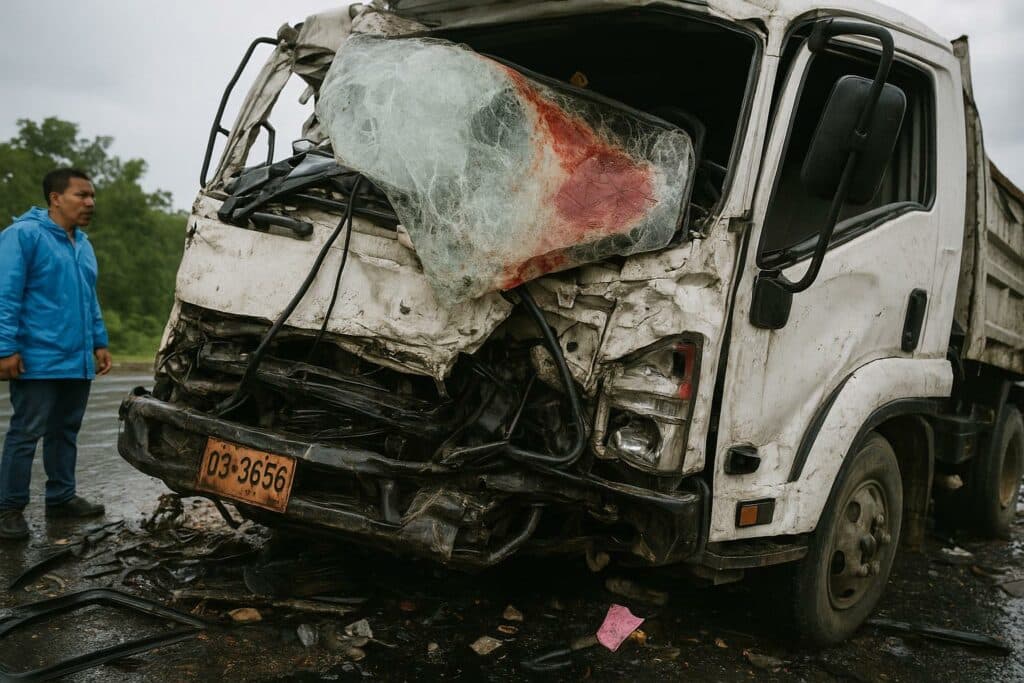A Sunday Journey That Ended in Tragedy
Dawn had barely broken on 21 September when the Stelimac inter-city bus left Brazzaville for the Atlantic hub of Pointe-Noire. Somewhere along the winding section of National 1 bordering the village of Ngamandzambala, the driver lost control and the vehicle plunged into a roadside drainage ditch. Emergency services dispatched from Kinkala confirmed two fatalities at the scene and evacuated several wounded passengers to district medical facilities, according to an initial communiqué from the Ministry of Transports. While the human toll remains provisional, the emotional shock is already tangible among families and fellow travellers.
An Unsettling National Scoreboard
The accident is more than an isolated episode; it becomes a new entry in a statistical ledger that has grown increasingly alarming. Between 2020 and 2024, Congo-Brazzaville registered 12 564 road crashes, causing 1 040 deaths, 4 707 serious injuries and 4 376 minor injuries, official data show. On average, the country endures over 2 500 accidents each year, placing traffic incidents among the leading causes of premature mortality alongside malaria and cardiovascular disease. Public-health researchers at the University of Marien-Ngouabi warn that the demographic ripple effects—lost productivity, orphaned dependants, long-term disability—exert silent pressure on national development targets.
Root Causes: A Complex Mesh of Behaviour and Infrastructure
Although the Transport Ministry’s reports stop short of an exhaustive breakdown, patterns repeatedly point to excessive speed, alcohol-impaired driving and lax seat-belt use. Several civil-engineering audits add another layer: outdated signalling, narrow bridges and periodic pothole clusters that multiply reaction-time hazards. Stelimac representatives, interviewed after the Pool crash, acknowledged the need for additional driver refresher programmes but underlined that the National 1 corridor also suffers from fatigue-inducing congestion. In short, human error and infrastructure fatigue overlap in ways that complicate purely punitive solutions.
Government Strategy: From Awareness to Enforcement
Over the past eighteen months, the Congolese authorities have recalibrated their approach. The Transport Ministry now couples media campaigns highlighting seat-belt compliance with random breathalyser checkpoints on major arterial roads. According to ministry officials, the number of unannounced mechanical inspections on inter-city buses has doubled since early 2023, and a pilot project introducing radar-equipped patrol vehicles began this quarter along the Pool-Brazzaville axis. A senior official, requesting anonymity, stressed that the objective is “not merely to sanction but to create a culture where safety becomes second nature.”
Societal Voices Advocate Structural Reforms
Beyond official corridors, civic associations such as Mouvement Nouvelle Route and the Congolese Red Cross argue that behaviour-change campaigns must be matched by large-scale capital spending. They call for resurfacing critical segments of National 1, installing luminous lane markings and modernising rural health posts so that golden-hour trauma care becomes more than a slogan. Economists from the Chamber of Commerce estimate that traffic accidents cost the equivalent of 2 percent of GDP annually through medical spending, vehicle losses and productivity gaps. In their view, reducing crashes is as much an economic imperative as it is a humanitarian one.
À retenir
The Ngamandzambala crash crystallises a broader issue: every day, Congolese commuters navigate a network where behavioural lapses intersect with infrastructural frailties. Addressing only one dimension risks perpetuating the cycle.
Le point juridique/éco
Under Congolese law, transport operators must carry valid technical-inspection certificates and comply with the 2019 Road Safety Act that imposes tiered fines for negligence. Legal analysts suggest that the upcoming draft amendment—foreshadowed during the last ordinary session of Parliament—could raise insurer liability ceilings, thereby incentivising companies to invest in advanced driver-assistance systems. Such reforms may also open the door to public-private partnerships for toll-based highway upgrades, sharing the fiscal burden while stimulating construction employment.

